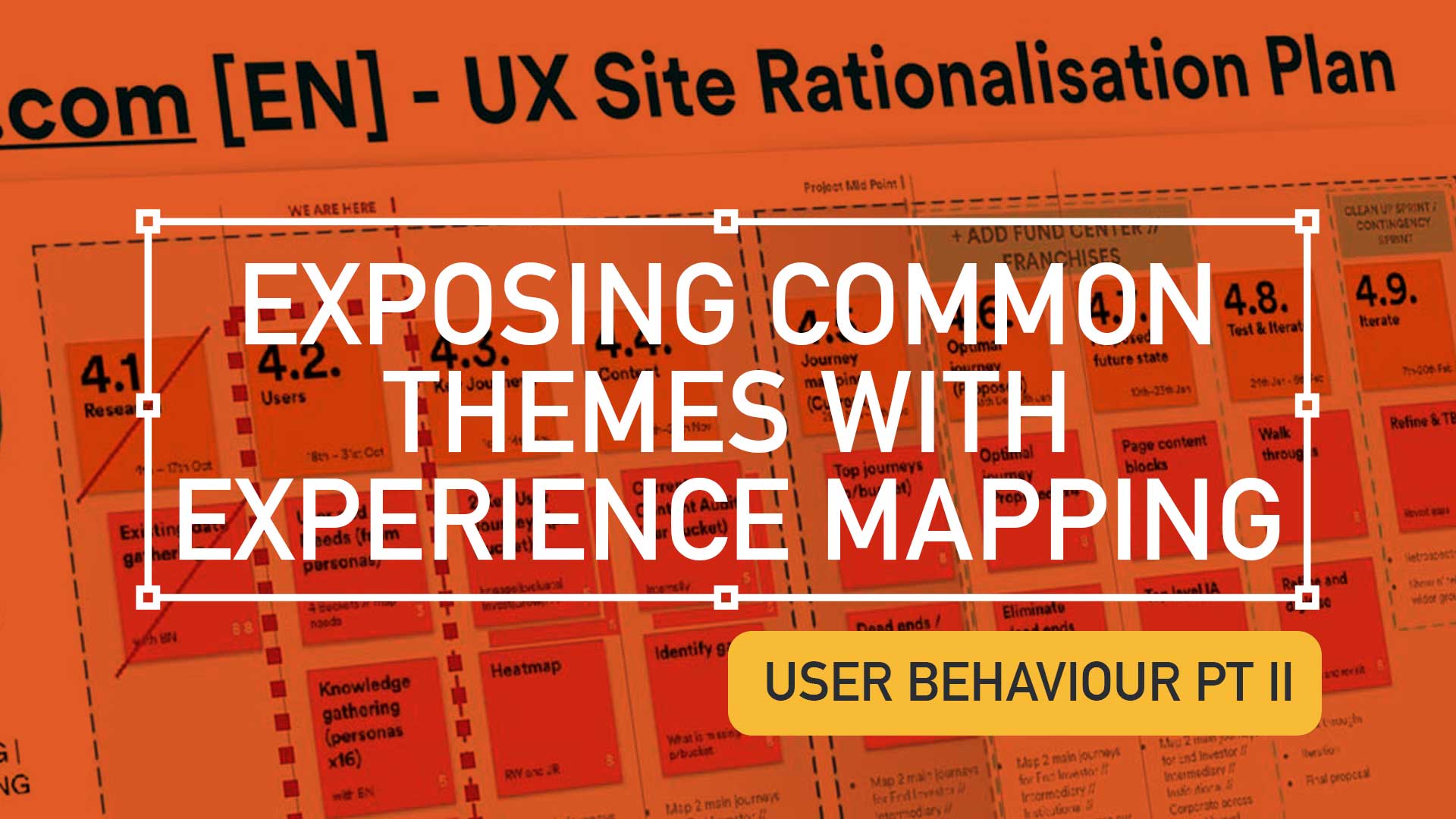TLDR: Crafting an unforgettable investment experience within the intricate world of investor behaviour unveiled a tapestry of needs and motivations that shape financial decisions. Using Experience Mapping these insights into the customer lifecycle were uncovered and common threads exposed.
Hard Skills:
Design Process
Research & Theory
Visual Design
Soft Skills:
Strategic Thinking
Problem-Solving
Critical Thinking
Please note; for client confidentiality sensitive parts of all imagery has been pixelated. All work is copyright ©RussellWebbDesign 2023
This article builds upon the previous post ‘Get to know your users better‘. For a more comprehensive understanding of the UX and Service Design process that led to this point, I encourage readers to refer back.
Needs: From Common Themes to Experience Mapping
You should now really begin to unravel the who, what and why of your users that define your target audience. Now there is an opportunity to unearth the common themes that weave through their experiences, transforming them into actionable insights through experience mapping.

Applying mapping techniques to personas types
Shifting the traditional application of an experience map and focussing on the customer lifecycle particular to this financial services customer, more insight and understanding was surfaced by categorising the needs, problems, and goals distinct to an informed personas-type actioning a focussed single, representative task. These were segmented into emotions and motivations.
In the details with Investor Type #1

Investor type #1 persona – “I want to quickly get to the details of a fund” categorised how they were orientated through the digital experience and uncovered how to attract, engage, orient, and retain this specific persona.
The mindset of Investor Type #2

Investor type #2 persona – Easily justify that a fund is performing also followed the control. Beginning with Orientation, linked to defined buckets and evaluating needs around investment philosophy, financial storytelling and model portfolios, for example. Identify what Attract mechanism drew them in and if ease-of-access to data influenced their decision-making process.
Empowering Investor Type #3 with Confidence

Investor type #3 persona – Guide me and make me feel in control when investing builds on the Retain narrative, examining how the digital experience addresses their need for support and guidance. From an Invest and Help perspective, how Risk is demonstrated and how to cultivate Trust empowering them to navigate the investment landscape with confidence.
Type #4; The insider scoop

Investor type #4 persona had the need to “Provide easily accessible information to reassure my position” as a corporate user. Touch points pushed to ’encouraged a long term time investment,’ and ‘establishing the real truth was behind the marketing efforts’. The needs and wants of this user all stemmed from cutting through the noise and showing insider industry knowledge for trends and success.
The combined heat map

Unifying insights to prioritise needs
The combined heat map elevated the investor experience and fostered stronger relationships with clients and customers, empowering them to achieve their financial goals.
Priority touch points
This highlighted insight from the proto-persona grouped to Thinking and Doing actions during the activity; How our audience behaved within each section of the customer lifecycle.
User needs by lifecycle
By further analysing the results reveal traffic light priorities. Here I have only shown one persona group.

Next steps
The next step in this Content Audit and Inventory process is to map the priority touch-points identified in this article (and the previous ‘Get to know your users better‘) to the actual content that exists. With over 30K pages, HR Resource and Budgeting used the above data as their business case to justify allocation. A separate discussion on stakeholder management for this Content Audit and Inventory project was a precursor before these steps were actioned.
By aligning content with user needs and ensuring stakeholder buy-in, this organisation can create a more impactful content strategy that drives business growth and enhances user experience.
Please note; for client confidentiality sensitive parts of all imagery has been pixelated. All work is copyright © RussellWebbDesign 2023
